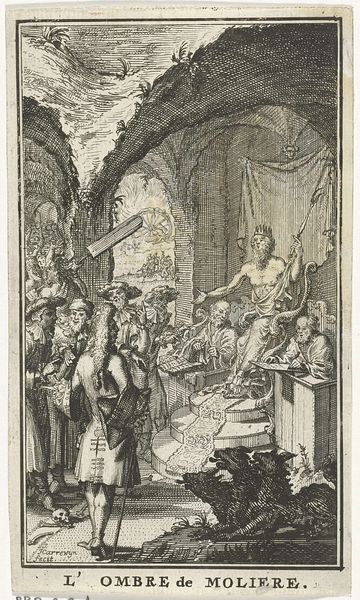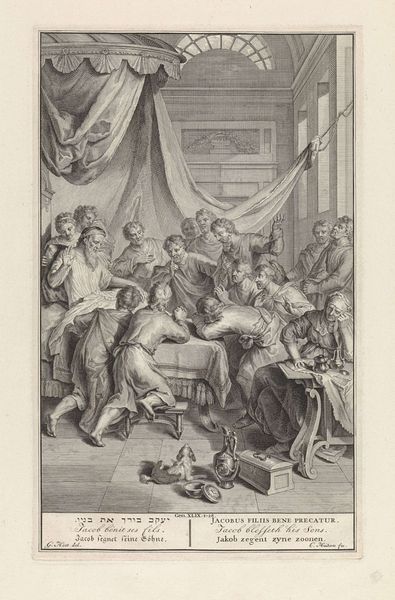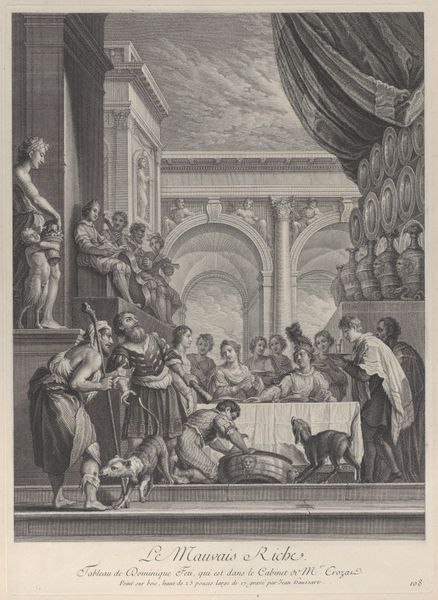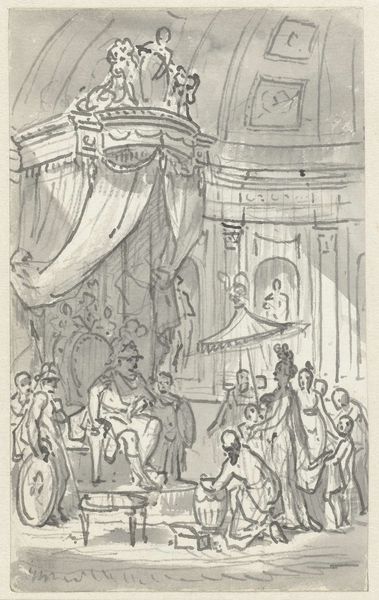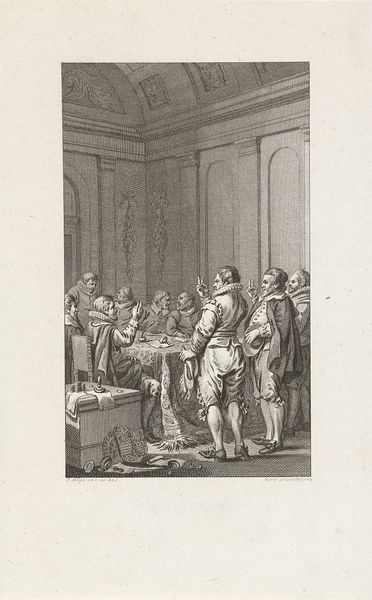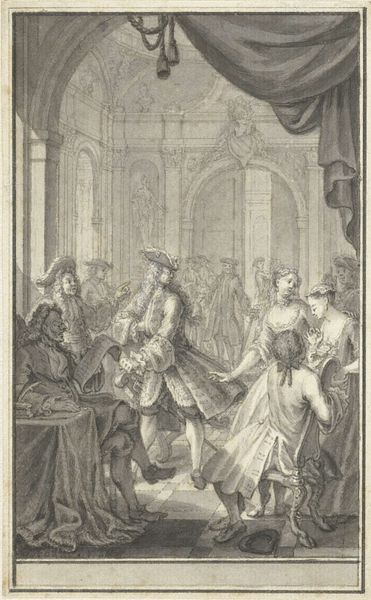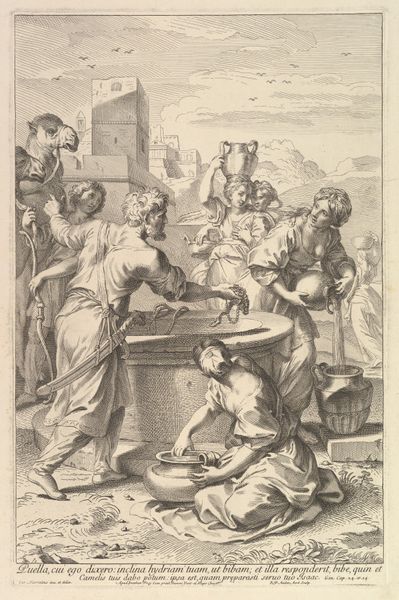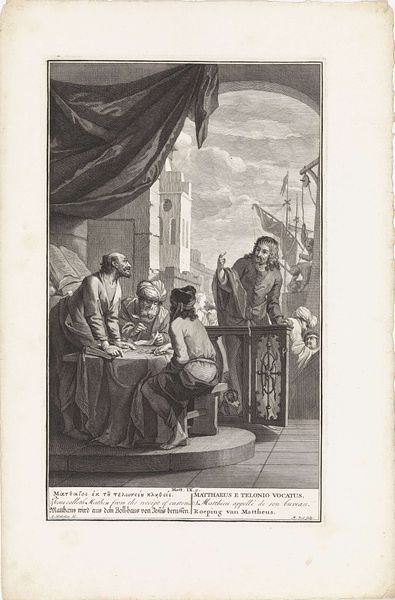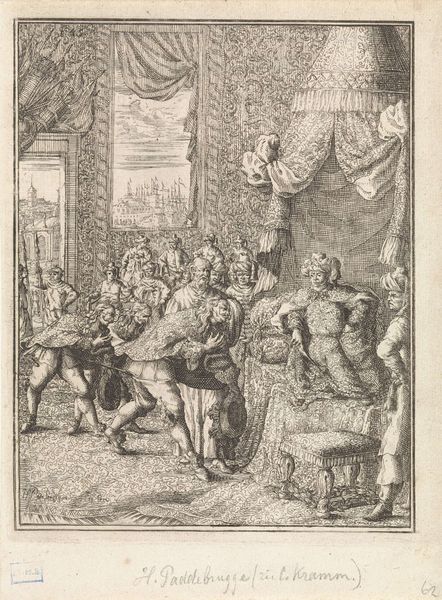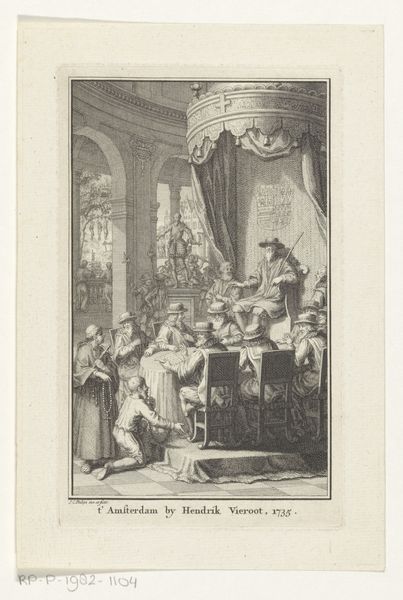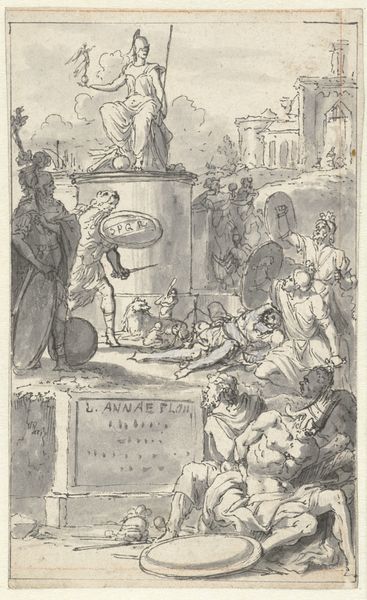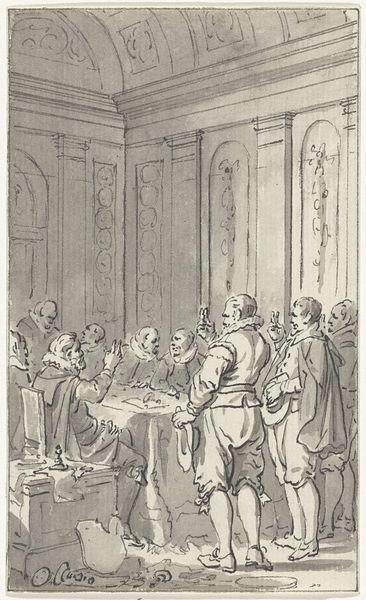
Title Page Design for Johannes Janssonius van Waesberge, Atlas Contractus 1661 - 1666
0:00
0:00
drawing, paper, ink, engraving
#
portrait
#
drawing
#
allegory
#
baroque
#
caricature
#
paper
#
ink
#
pen-ink sketch
#
sketchbook drawing
#
portrait drawing
#
history-painting
#
engraving
Dimensions: height 411 mm, width 263 mm
Copyright: Rijks Museum: Open Domain
Curator: This delicate pen and ink drawing is a design for the title page of Johannes Janssonius van Waesberge’s “Atlas Contractus,” dating from around 1661-1666, attributed to Zacharias Webber the Younger. What strikes you initially about it? Editor: It feels surprisingly crowded and theatrical for a title page design. So many figures and levels! A grand production for, essentially, book marketing. Curator: Yes, there's an overt Baroque sensibility. Webber creates a visual hierarchy, using allegorical figures alongside recognizable individuals, probably patrons. The contrast of Atlas stoically holding the world with these seemingly wealthy scholars evokes questions around power and knowledge. Who held the power, made it accessible, controlled its creation and consumption. Editor: Seeing the mechanics of map-making laid out is compelling. I'm drawn to the table at the center, where it seems like a female figure, perhaps an allegorical representation of cartography, is actively drawing with a compass. Next to the open map lays what looks like some type of geared navigational tool. What relationship is Webber attempting to construct between raw material and final product by focusing on laboring intellectuals? Curator: That’s exactly what makes Webber's image resonate beyond a simple advertisement. In that period, the Atlas became the symbol of power and human endeavor. Mapping the world equaled ownership. Consider the composition – all these figures gazing toward something, working to harness nature, creating order. How does that vision contrast with other marginalized populations in the period, say, people and lands exploited by colonial forces? Editor: It highlights the division of intellectual labor. This image displays an early kind of globalized production of knowledge. Wealthy Europeans extracting and systematizing information gathered through the exploitation of labor and resources elsewhere. Atlas in this historical reading becomes not just knowledge but specifically the human cost behind European control over it. Curator: And what is it that remains largely unacknowledged even in our time? Art like this design opens a space for us to ask precisely those questions about systems and ethics and what continues to remain excluded or devalued. Editor: Indeed. By showing us the map-makers and the weight of knowledge itself, Webber's composition points to something much bigger: the social relations embedded in the very act of representing the world. It allows us to connect seemingly disparate phenomena—from labor in the workshop to the exercise of colonial power.
Comments
rijksmuseum about 2 years ago
⋮
Johannes van Waesberge continued the cartography and publishing firm of his father-in-law Johannes Janssonius, incorporating the latter’s name into his own. In this title page Zacharias Webber depicted three seated men, namely the eminent geographers Gerard Mercator with a hat, Jodocus Hondius, and at the left, as a tribute, Johannes Janssonius. In the background is Atlas with the Earth on his shoulders; the woman with a compass at the right personifies Geography.
Join the conversation
Join millions of artists and users on Artera today and experience the ultimate creative platform.

